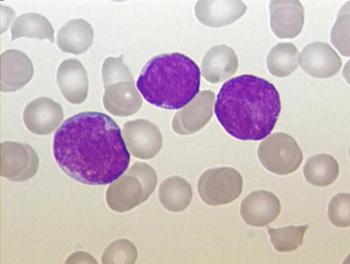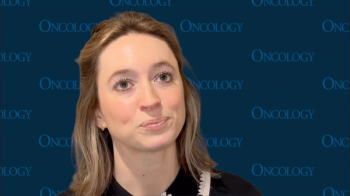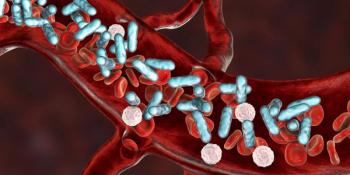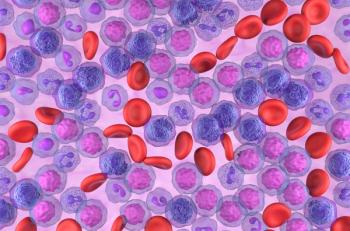
Oncology NEWS International
- Oncology NEWS International Vol 9 No 2
- Volume 9
- Issue 2
All-trans Retinoic Acid Could Make APL Most Curable Acute Myeloid Leukemia
CHICAGO-Using all-trans retinoic acid (ATRA) to both induce remission and for maintenance makes acute promyelocytic leukemia (APL) potentially the most curable subtype of adult acute myeloid leukemia, said Martin S. Tallman, MD, at the American Society of Hematology meeting.
CHICAGOUsing all-trans retinoic acid (ATRA) to both induce remission and for maintenance makes acute promyelocytic leukemia (APL) potentially the most curable subtype of adult acute myeloid leukemia, said Martin S. Tallman, MD, at the American Society of Hematology meeting.
An associate professor of medicine at Northwestern University Medical School and member of the Robert H. Lurie Comprehensive Cancer Center in Chicago, Dr. Tallman reported on data from the long-term follow-up of a collaborative study. Participating in the study were the Eastern Cooperative Oncology Group, the National Cancer Institute of Canada-Clinical Trials Group, the Cancer and Leukemia Group B, the Southwest Oncology Group, the Childrens Cancer Group, and the Pediatric Oncology Group.
The researchers compared the four possible combinations of two induction and consolidation treatments and two maintenance treatments. The 350 APL patients were given an induction treatment that consisted of either:
- ATRA at a dose of 45 mg/m² per day until a complete remission occurred or for a maximum of 90 days; or
- daunorubicin (Cerubidine) at 45 mg/m²per day by intravenous bolus on days 1 to 3 and cytarabine (ara-C [Cytosar and others] ) 100/m² by continuous infusion on days 1 to 7. (Children less than 3 years old received a reduced dose.)
Consolidation/Maintenance
All patients who achieved complete remission then received two cycles of consolidation therapy. First, they went through another cycle of the drugs given in the induction phase. Next, each received a 1-hour infusion of cytarabine at 2 g/m² twice a day for 4 days and an intravenous infusion of daunorubicin at 45 mg/m² on days 1 and 2, except children less than 3, who again received a smaller dose of daunorubicin and cytarabine.
Patients who were still in complete remission after both consolidation cycles moved into the maintenance phase. They were randomly assigned to one of two groups:
- observation alone or
- 45 mg/m² of oral ATRA each day for 1 year.
Survival Data Diverge
Of the 350 patients, 250 achieved complete remission, including 70% of patients whose induction therapy was daunorubicin-cytarabine and 73% of patients induced by ATRA. Survival data, however, revealed a significant difference between these two groups. The best outcome is achieved when ATRA is given during induction and maintenance, Dr. Tallman said.
For patients with daunorubicin-cytarabine as induction therapy, disease-free survival after 5 years was 47% among those on ATRA during maintenance and only 10% among those merely observed. For patients with ATRA as induction therapy, disease-free survival after 5 years was 74% among those on ATRA also during maintenance and 51% among those observed.
Twenty of the 250 patients relapsed after 2 years of remission, with the longest remission among the patients relapsing late 4.3 years before relapse. Only 1 patient of the 20 was in the ATRA-ATRA group.
Dr. Tallman concluded that the excellent results produced by ATRA given both during induction and maintenance means that APL has become potentially more curable than other acute myeloid leukemias. In the question-and-answer session, he stated that he believes that maintenance therapy is important for patients with APL.
Articles in this issue
almost 26 years ago
Neoadjuvant Docetaxel Increases Response Rate in Large Breast Tumorsalmost 26 years ago
Faslodex, a Pure Antiestrogen, Shows Antitumor Activityalmost 26 years ago
Consider Node Dissection, Adjuvant Therapy in Elderly Breast Cancer Patientsalmost 26 years ago
Tumor-Associated Proteases Predict Outcome in Node-Negative Patientsalmost 26 years ago
Herceptin Plus Vinorelbine a Promising Combination in Advanced Breast Canceralmost 26 years ago
Small Risk of Breast Cancer Death After Invasive Recurrence in DCIS Patientsalmost 26 years ago
Paclitaxel/Herceptin Effective in Metastatic Breast Canceralmost 26 years ago
Conservative Surgery Alone Not Sufficient to Prevent RecurrenceNewsletter
Stay up to date on recent advances in the multidisciplinary approach to cancer.

















































































